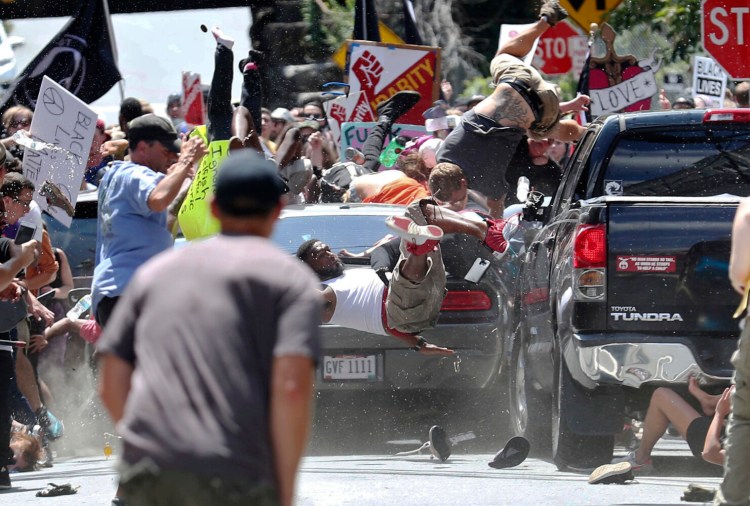RICHMOND, Va. – The Charlottesville City Council voted unanimously Monday night to remove statues of Confederate generals Robert E. Lee and Stonewall Jackson from public parks, starting the clock ticking on the demise of monuments at the heart of the deadly “Unite the Right” rally in 2017.
The action comes as another famous Civil War effigy – Richmond’s towering monument to Lee – faces a key hearing on Tuesday before the Supreme Court of Virginia that will determine its fate. Justices will hear appeals in two lawsuits in which a handful of local residents sought to block Gov. Ralph Northam, D, from taking down Lee but were thwarted by a lower court judge.
In Charlottesville, the council had decided to remove the statues shortly after the white supremacist rally in which one counterprotester was hit by a car and killed. But a small group of citizens filed suit and a judge granted an injunction that prevented the statues from coming down.
The state Supreme Court threw out that lawsuit in April and cleared the way for Charlottesville – or any other locality in the state – to pass judgment on the fate of its Confederate icons.
No current member of the city council was serving at the time of the original vote, so the body decided to hold a public hearing and then vote again before proceeding.
At Monday night’s hearing, which was held virtually via videoconference, 55 citizens spoke and all but about a half-dozen urged the city to remove the statues.
“It’s past time for those things to come down,” community leader Don Gathers said. Like many other speakers, he urged the city to move quickly and not to send the statues to another community.
Many mentioned that when neighboring Albemarle County removed a statue of a Confederate soldier from its courthouse last summer, the figure was relocated to a Civil War battlefield in the Shenandoah Valley.
“If my trash ends up in a neighbor’s yard, it’s still trash,” Gathers said. “Those things are like the bat signal for white supremacists.”
Several speakers urged the council to have the statues gone before the Aug. 11-12 anniversary of the 2017 rally, saying they consider them to be a public safety hazard because they continue to be a rallying point for right-wing extremists.
“The [Lee] statue attracts violent, radical extremists from all over the state and all over the county,” city resident Kat Maybury said.
A handful of speakers defended the statues as representing history, and suggested adding “context” to more fully tell their story.
But one speaker, Katrina Turner, asked what could possibly provide adequate context, and wondered whether a statue of a pickup truck pulling the body of a Black man or a depiction of lynchings would be enough.
No, she said – “melt them down. Get rid of them where nobody else has to look at what has stood for so long to keep us in our place.”
The council’s resolution, which passed after 11 p.m., allows a 30-day period to accept proposals from the public for what to do with the bronze figures. In the meantime, the city could cover them with tarps, but several speakers cautioned against going that route for fear of luring extremists to tamper with the coverings.
The hearing on the Richmond monument is scheduled to get underway Tuesday morning. Justices will consider appeals of two cases: In one, the descendant of a family who donated land for the Lee statue argued unsuccessfully that Northam’s order to remove it violated the terms of the 1890 deed, which called for the state to protect it in perpetuity.
In the second case, a group of five Richmond residents argued that Northam’s action violated agreements made by the General Assembly at the time the statue was erected. The same judge threw out that case, ruling that public policy has changed since then.
The high court probably will rule sometime this summer. In the meantime, the Lee statue sits behind high, temporary fencing on its giant traffic circle along Monument Avenue.
Social justice protests last summer left the towering figure covered with graffiti and transformed it into an international symbol of the racial equity movement. A state-funded commission is studying what to do with the public space should the statue come down as planned.
Comments are not available on this story.
Send questions/comments to the editors.


